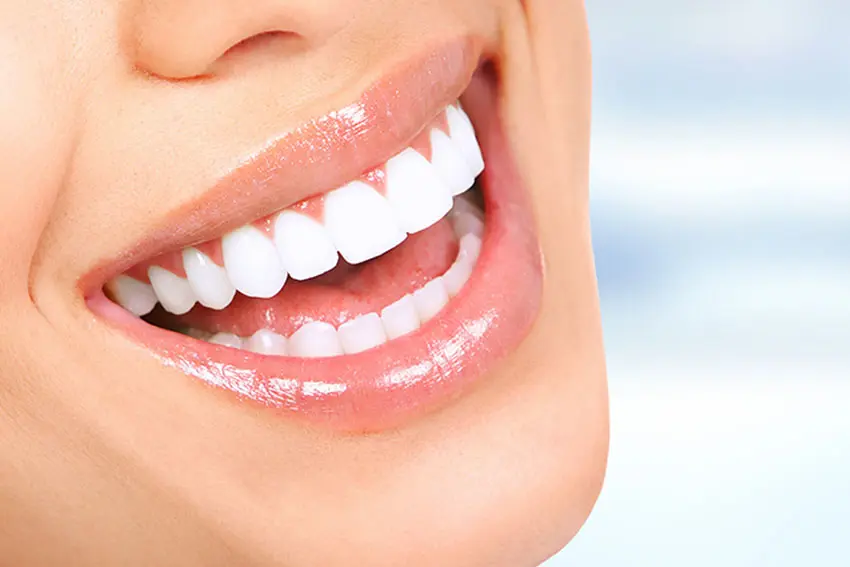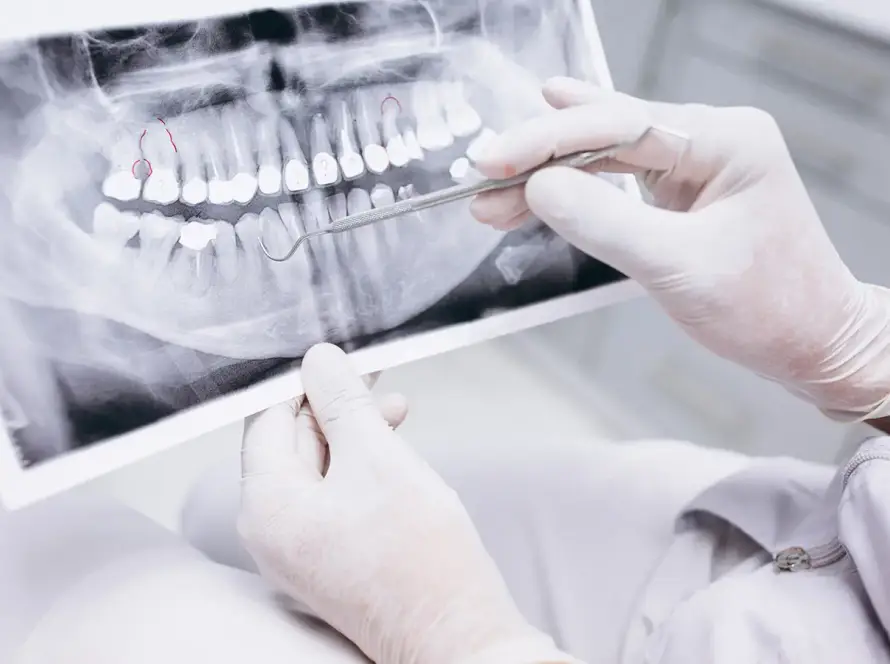Sleep apnea is a common sleep disorder that affects millions of people worldwide. It is characterized by pauses in breathing during sleep, which can range from a few seconds to minutes. These pauses, known as apneas, can occur multiple times throughout the night and can disrupt the normal sleep cycle.
There are two main types of sleep apnea: obstructive sleep apnea (OSA) and central sleep apnea (CSA). OSA is the most common form and occurs when the airway becomes partially or completely blocked during sleep, leading to shallow or paused breathing. CSA, on the other hand, is less prevalent and is caused by a failure of the brain to send proper signals to the muscles that control breathing.
Both OSA and CSA can have significant impacts on a person’s health and well being. Common symptoms include loud snoring, excessive daytime sleepiness, morning headaches, and difficulty staying asleep. If left untreated, sleep apnea can increase the risk of various health problems, such as high blood pressure, heart disease, and stroke.
It is important to understand the differences between OSA and CSA to determine the appropriate treatment approach. OSA is typically treated with continuous positive airway pressure (CPAP) therapy, which involves wearing a mask over the nose or mouth during sleep to deliver a steady stream of air pressure to keep the airway open. CSA, on the other hand, may require medication or the use of devices that help regulate breathing patterns.
In conclusion, sleep apnea is a sleep disorder that can have a significant impact on a person’s health and quality of life. Understanding the differences between obstructive sleep apnea and central sleep apnea is essential in order to provide effective treatment and management of the condition. Proper diagnosis and appropriate treatment can help individuals with sleep apnea improve their sleep quality and overall well being.
Obstructive Sleep Apnea
Obstructive Sleep Apnea (OSA) is a sleep disorder characterized by the partial or complete blockage of the upper airway during sleep. It is the most common form of sleep apnea and is prevalent among people of all ages, although it is more commonly seen in older individuals.
The primary cause of OSA is the relaxation of the muscles in the throat, leading to the narrowing or complete closure of the airway. This obstruction hampers the smooth flow of air, resulting in a disrupted breathing pattern during sleep. The person affected by OSA may experience repeated episodes of loud snoring, gasping, or choking as they struggle to breathe.
Common risk factors associated with OSA include obesity, smoking, family history of the disorder, and anatomical abnormalities such as a narrow throat or large tonsils. The condition can also be aggravated by certain lifestyle habits, such as alcohol consumption and sedative medication use.
In addition to the distressing symptoms, OSA can have serious health consequences. The intermittent cessation of breathing during sleep can lead to a decrease in oxygen levels in the blood and cause a strain on the cardiovascular system. This can increase the risk of high blood pressure, heart disease, stroke, and other complications if left untreated.
Diagnosing OSA involves a comprehensive evaluation, including a patient’s medical history, physical examination, and overnight sleep study. Treatment options may vary depending on the severity of the condition but commonly involve lifestyle changes, such as weight loss and avoiding alcohol and sedatives. Continuous Positive Airway Pressure (CPAP) therapy, which delivers pressurized air through a mask, is often prescribed to ensure the airway remains open during sleep.
Understanding OSA is crucial for individuals who suspect they may be suffering from this disorder. Prompt diagnosis and appropriate treatment can help improve their quality of life, reduce health risks, and restore restful sleep. Seeking medical advice is important for those experiencing symptoms such as loud snoring, excessive daytime sleepiness, or frequent awakenings during the night.
Central Sleep Apnea
Central sleep apnea is a less common form of sleep apnea compared to obstructive sleep apnea. It occurs when the brain fails to send the proper signals to the muscles that control breathing during sleep. This leads to pauses in breathing and a disruption of the normal sleep cycle.
Unlike obstructive sleep apnea, which is primarily caused by a physical blockage of the airway, central sleep apnea is a result of a dysfunction in the central nervous system. It can occur in individuals with certain medical conditions, such as heart failure, stroke, or brainstem damage. It can also be a side effect of certain medications or high altitude.
One of the key differences between central sleep apnea and obstructive sleep apnea is that central sleep apnea is not associated with snoring. In fact, it is often characterized by silence during periods of halted breathing. Other symptoms of central sleep apnea may include excessive daytime sleepiness, morning headaches, and difficulty concentrating.
Diagnosing central sleep apnea typically involves a sleep study, which monitors brain activity, heart rate, oxygen levels, and breathing patterns during sleep. Treatment options for central sleep apnea may include addressing the underlying medical condition, adjusting medications, or using a device called a continuous positive airway pressure (CPAP) machine.
Understanding the differences between central sleep apnea and obstructive sleep apnea is crucial in order to determine the appropriate treatment approach. If you suspect that you or a loved one may be experiencing symptoms of central sleep apnea, it is important to seek medical attention for proper diagnosis and management.
Causes and Risk Factors of Obstructive Sleep Apnea
Obstructive sleep apnea (OSA) can occur due to various causes and is influenced by certain risk factors. The primary cause of OSA is the relaxation of the throat muscles during sleep, causing the airway to become partially or completely blocked. This blockage leads to episodes of shallow breathing or pauses in breathing, disrupting the normal sleep pattern.
Several risk factors increase the likelihood of developing OSA. Obesity is one of the primary risk factors as excess weight can put additional pressure on the upper airway, leading to airway collapse. Age is another factor, as the muscles in the throat tend to lose their tone and elasticity with aging, making them more prone to collapse during sleep.
Other factors that contribute to OSA include a family history of sleep apnea, smoking, alcohol consumption, and the use of sedatives or tranquilizers. Nasal congestion, enlarged tonsils or adenoids, and certain anatomical abnormalities, such as a deviated septum or small jaw, can also contribute to the development of OSA.
Understanding the causes and risk factors of OSA is crucial for identifying individuals at high risk and implementing preventative measures. By addressing these factors, healthcare providers can help manage and potentially reduce the risk of developing OSA.
Symptoms and Diagnosis of Obstructive Sleep Apnea
Symptoms of Obstructive Sleep Apnea
- Loud and chronic snoring
- Excessive daytime sleepiness
- Restless sleep and frequent awakenings
- Gasping or choking during sleep
- Morning headaches
- Difficulty concentrating and memory problems
- Irritability and mood swings
- Dry mouth or sore throat upon waking
Diagnosis of Obstructive Sleep Apnea
- Clinical evaluation: A healthcare professional will assess the patient’s medical history, symptoms, and physical examination.
- Sleep study: A polysomnography test is conducted to monitor various parameters during sleep.
- Apnea hypopnea index (AHI): This index measures the number of apneas and hypopneas per hour of sleep.
- Home sleep apnea test (HSAT): In some cases, the patient may undergo a portable sleep monitoring test at home.
- Additional evaluations: The doctor may order additional tests like oximetry, nasal endoscopy, or imaging studies if necessary.
It is crucial for individuals experiencing these symptoms to consult a healthcare professional for proper diagnosis and appropriate treatment. Early identification of obstructive sleep apnea is essential to prevent complications and promote overall wellbeing.
Treatment Options for Obstructive Sleep Apnea
When it comes to managing obstructive sleep apnea (OSA), several treatment options are available. The choice of treatment depends on the severity of the condition, individual preferences, and the underlying causes. Here are some common treatment options for obstructive sleep apnea:
- Lifestyle modifications: Certain lifestyle changes can help improve symptoms of OSA. These include maintaining a healthy weight, avoiding alcohol and sedatives, quitting smoking, and sleeping on your side instead of your back.
- Continuous Positive Airway Pressure (CPAP): CPAP is a widely used treatment for OSA. It involves wearing a mask over the nose or mouth during sleep, which delivers a constant stream of air to keep the airways open.
- Oral appliances: Certain dental devices, such as mandibular advancement devices, can help keep the airway open by repositioning the jaw and tongue during sleep. These oral appliances are custom made and fitted by a dentist.
- Surgery: In severe cases of OSA, surgery may be recommended to remove excess tissue blocking the airway or to correct structural abnormalities. Surgical options include uvulopalatopharyngoplasty (UPPP), tonsillectomy, and maxillomandibular advancement.
- Weight loss: For individuals with obesity related OSA, losing weight can significantly reduce symptoms. A combination of dietary changes, regular exercise, and behavioral modifications can facilitate weight loss.
- Positional therapy: If OSA is mainly experienced when sleeping on the back (supine position), positional therapy techniques can help. This may involve using devices like specialized pillows or wearable devices that alert the individual when they roll onto their back.
- Oral medications: Although not commonly prescribed, some medications may be used to manage OSA symptoms. These medications are typically aimed at reducing the severity of the condition or addressing underlying factors such as allergies or nasal congestion.
It’s important to note that treatment approaches for OSA may vary from person to person, and a combination of different treatment options might be required to effectively manage the condition. Consulting a healthcare professional is crucial to determine the most appropriate treatment plan for an individual with obstructive sleep apnea.
Causes and Risk Factors of Central Sleep Apnea
Central sleep apnea (CSA) is primarily caused by a dysfunction in the brain’s respiratory control center, which fails to send the appropriate signals to the muscles involved in breathing. This lack of communication can result in a complete cessation or reduction in breathing efforts during sleep. Understanding the causes and risk factors associated with CSA can help individuals recognize the potential for developing this condition and seek appropriate medical attention.
Causes:
- Medical Conditions: Certain medical conditions can increase the risk of developing central sleep apnea. Examples include Parkinson’s disease, stroke, congestive heart failure, and kidney failure. These conditions can affect the brain’s ability to regulate breathing, leading to CSA.
- Medications: Some medications, such as opioids or certain sedatives, can suppress the brain’s respiratory drive and contribute to the development of central sleep apnea.
- High Altitude: People who live at higher altitudes, where the levels of oxygen are lower, may be more prone to developing CSA due to the reduced oxygen availability.
Risk Factors:
- Age: Central sleep apnea is more common in older adults. As people age, the respiratory control center in the brain may become less effective, leading to a higher risk of CSA.
- Gender: Men are more likely to develop central sleep apnea than women. However, after menopause, the risk for women increases, closing the gender gap to some extent.
- Heart Disorders: Individuals with certain heart conditions, such as congestive heart failure or atrial fibrillation, are at an increased risk of developing CSA.
- Obesity: Excess weight can put additional pressure on the respiratory system, making it harder to breathe efficiently during sleep. Obesity is a common risk factor for both obstructive and central sleep apnea.
- Substance Abuse: The use of certain substances, such as alcohol or opioids, can impair the brain’s respiratory function, potentially leading to central sleep apnea.
It is important to note that central sleep apnea can also occur in individuals without any specific risk factors. Therefore, anyone experiencing symptoms of sleep apnea, such as excessive daytime sleepiness or loud snoring, should consult a healthcare professional for further evaluation and diagnosis.
Symptoms and Diagnosis of Central Sleep Apnea
Central sleep apnea (CSA) is a sleep disorder characterized by the brain’s failure to send the appropriate signals to control breathing during sleep. Unlike obstructive sleep apnea (OSA), which is caused by physical obstructions in the airway, CSA is a result of a problem with the central nervous system.
The symptoms of CSA can vary from person to person but often include:
- Frequent awakenings: Individuals with CSA may find themselves waking up multiple times during the night, gasping for air or choking.
- Daytime sleepiness: Due to the fragmented and restless sleep caused by CSA, individuals often experience excessive daytime sleepiness, which can impact their daily functioning and quality of life.
- Fatigue: Constant fatigue is another common symptom of CSA. Even after a seemingly adequate amount of sleep, individuals may still feel exhausted and unrefreshed.
- Morning headaches: Headaches upon waking up are a frequent complaint among individuals with CSA. These headaches may be attributed to inadequate oxygen supply during sleep.
- Difficulty concentrating: CSA can affect cognitive function, causing difficulties with memory, concentration, and overall mental alertness.
To diagnose CSA, it is essential to undergo a proper evaluation by a sleep specialist. The diagnostic process typically involves:
- Sleep study: A sleep study, also known as a polysomnogram, is conducted to monitor and record various physiological parameters during sleep. This test allows the identification of breathing patterns and disturbances that occur during the night.
- Evaluation of sleep patterns: Sleep specialists will assess the sleep architecture and look for specific patterns associated with central apneas and sleep disruptions.
- Assessment of medical history: The sleep specialist will review the patient’s medical history, including any underlying medical conditions or medications that may contribute to or worsen CSA symptoms.
- Physical examination: A physical examination may be performed to evaluate the overall health and identify any physical factors that could contribute to sleep apnea.
By evaluating a combination of symptoms, sleep studies, and medical history, a sleep specialist can accurately diagnose central sleep apnea. After diagnosis, appropriate treatment options can be explored to manage the condition effectively and improve the individual’s quality of sleep and overall well being.
Treatment Options for Central Sleep Apnea
When it comes to treating central sleep apnea, various options are available to help manage the condition effectively. The primary goals of treatment are to improve sleep quality, relieve symptoms, and restore normal breathing patterns during sleep.
- Addressing underlying medical conditions: Since central sleep apnea can be caused by underlying medical conditions such as heart failure or stroke, it is crucial to treat and manage these conditions properly. This often involves medications, lifestyle changes, and close monitoring by healthcare professionals.
- Positive airway pressure therapy: Continuous positive airway pressure (CPAP) and bilevel positive airway pressure (BiPAP) therapy are commonly used to treat central sleep apnea. These devices deliver a steady stream of air pressure, preventing airway collapse and assisting with regular breathing. Adaptive servo ventilation (ASV) is another type of positive airway pressure therapy that adjusts pressure levels based on the patient’s breathing patterns.
- Supplemental oxygen: In some cases, providing supplemental oxygen during sleep can help improve oxygen levels in the blood. This approach may be beneficial for individuals with central sleep apnea and concurrent respiratory conditions, such as chronic obstructive pulmonary disease (COPD).
- Medications: Certain medications may be prescribed to stimulate respiratory function and stabilize breathing during sleep. Acetazolamide, a medication commonly used to treat altitude sickness, is sometimes prescribed to stimulate breathing and reduce episodes of central sleep apnea.
- Treating Cheyne Stokes respiration: Cheyne Stokes respiration is a specific type of central sleep apnea characterized by a rhythmic pattern of breathing followed by periods of apnea. Medications like opioids and certain heart failure medications can exacerbate Cheyne Stokes respiration. Adjusting or discontinuing these medications may help alleviate symptoms.
- Lifestyle modifications: Adopting healthy lifestyle habits can also contribute to managing central sleep apnea. Maintaining a regular sleep schedule, avoiding alcohol and sedatives, losing weight (if necessary), and sleeping on your side instead of your back may help improve symptoms.
It is important to consult with a healthcare professional experienced in sleep medicine to determine the most appropriate treatment plan for central sleep apnea. Individualized care and regular follow ups are essential to ensure the effectiveness of the chosen treatment strategy.
Differences Between Obstructive and Central Sleep Apnea
- Definition: Obstructive Sleep Apnea (OSA) is characterized by recurrent episodes of blocked or narrowed airways, causing breathing pauses during sleep. On the other hand, Central Sleep Apnea (CSA) occurs when the brain fails to send proper signals to the muscles that control breathing.
- Underlying Cause: OSA is primarily caused by physical obstructions in the airway such as relaxed throat muscles or excess tissue, leading to breathing difficulties. CSA, on the other hand, is usually associated with underlying medical conditions like heart failure, stroke, or brainstem damage, affecting the brain’s control of breathing.
- Breathing Patterns: In OSA, the individual experiences partial or complete blockage of the airway, leading to gasping or choking sensations, and subsequent awakening throughout the night. In CSA, breathing pauses occur due to the absence of signals from the brain, resulting in short periods of no breathing during sleep.
- Symptoms: Common symptoms of OSA include loud snoring, excessive daytime sleepiness, morning headaches, and mood disturbances. CSA may present symptoms like shortness of breath, fatigue, poor concentration, and irregular heartbeat.
- Treatment: The treatment approaches differ between the two types. For OSA, continuous positive airway pressure (CPAP) therapy is often used, which involves wearing a mask during sleep to maintain airway openness. CSA treatment depends on addressing the underlying medical condition, such as heart failure or neurological problems.
Understanding the differences between obstructive sleep apnea and central sleep apnea is crucial for proper diagnosis and treatment. The underlying causes, breathing patterns, and treatment approaches vary significantly, highlighting the importance of accurate identification and appropriate intervention for each individual.















